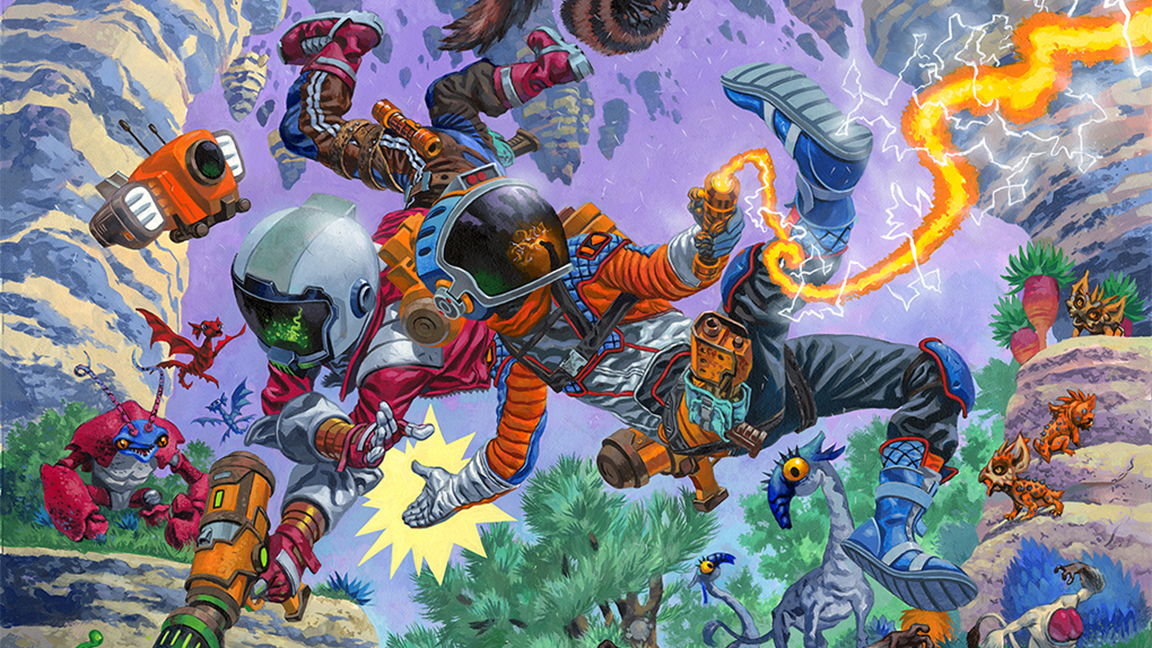
Game art has a legacy of coercing comic and fantasy artists into its world to create box and key art. Some of the best video game box art has been created by comic artists and illustrators, including the best of Atari's iconic advertising art.
When I ask Duncan Fegredo, who's renowned for his collaborations with Mike Mignola on Hellboy, why he jumped at the opportunity to work on upcoming video game Revenge of the Savage Planet for its poster art, he says it's because he "loves video games" and saw the poster project as "hovering somewhere between a cover or box art" that, for him, recalled the 16-bit era of Psygnosis covers by Roger Dean.
Duncan's art is bright and optimistic, and makes for a great fit with Raccoon Logic's colourful, weird and psychedelic exploration of alien worlds. The artist is already a fan of the previous game, Journey to the Savage Planet, but developer Raccoon Logic sent over design docs, costume designs, environment details and more for Duncan to riff off.
Making the poster art became about "scaling down" and "making sense of the chaos" in a "readable way". This means replicating the third-person view, the game's intense colours and fundamentally the poster is "telling a story".
Creating a game art for a poster or box is about capturing the essence of what makes the game unique, in this case the colour, co-op gameplay and crazy escapades. And as an artist Duncan needs to do this while retaining his style, as after all, that's what makes it unique.
"I'm trying to find a way of imbuing what the game is without losing sight of who I am," says Duncan. "So you're sort of walking a tightrope, it's a way of encapsulating [the game], still keeping the essence [of my style], and I think there's a crossover point. I could feel it when I was drawing the characters, because there is that fun stretch and squash animation to the figures, which I like to bring to my work anyway, and that was really nice to play with and I get drawn you into the characters. I get to play up those theatrical elements. It hopefully gives over a good time."
Below Duncan shares his process for creating the Revenge of the Savage Planet poster art. If you're inspired by this, then read our guide to the best drawing tablets and the best digital art software, and start creating.
1. Begin with loose sketches
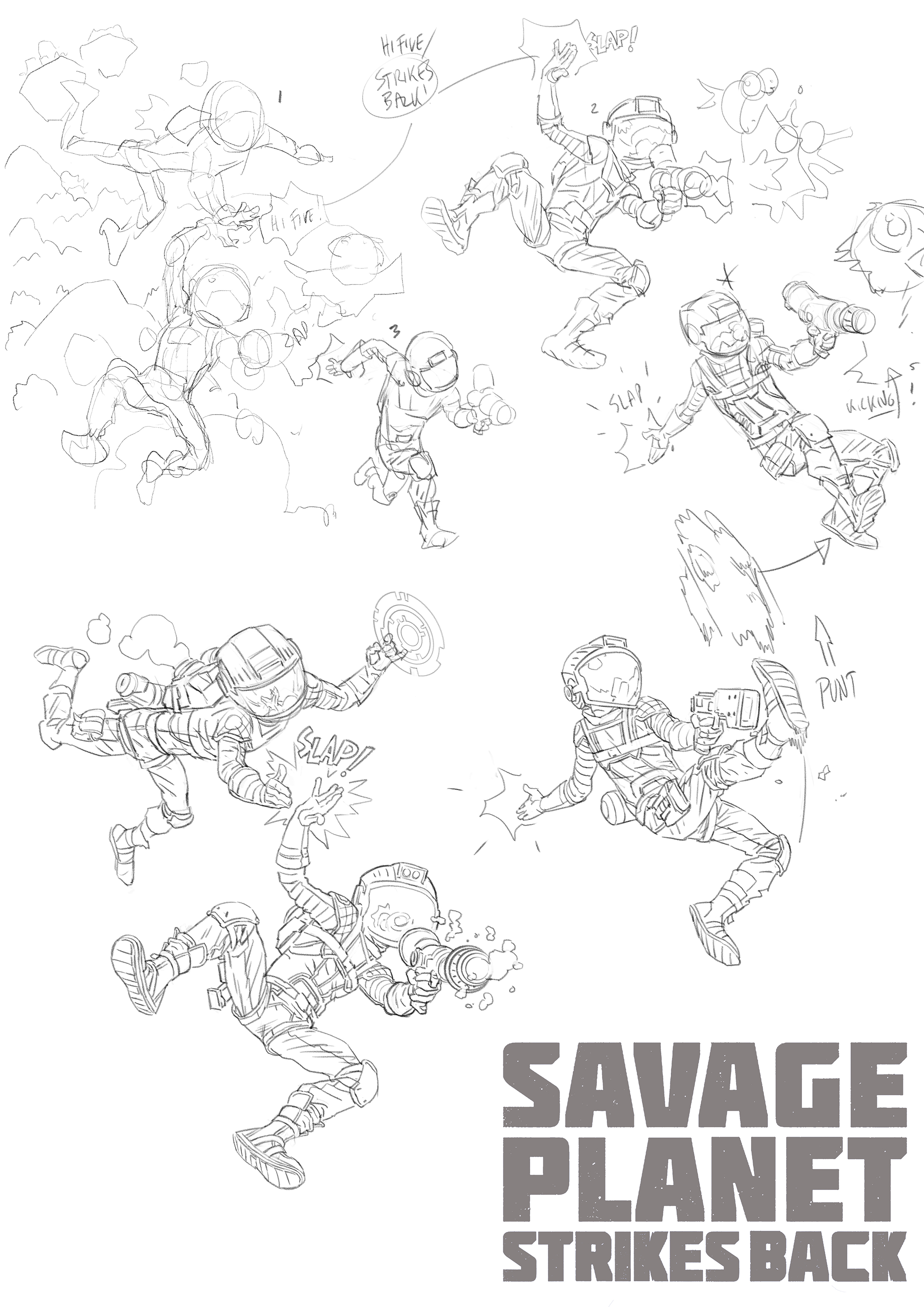
Having watched videos of the game in action I begin by making loose sketches. Amazingly the first sketch (top left) I made became the foundation for the final image. I have the player character and his co-op partner falling past floating islands exchanging a high fave. I knew I wanted to emphasise both the co-operative play (hence the high five) and the verticality of the game.
2. Exploring details and poses
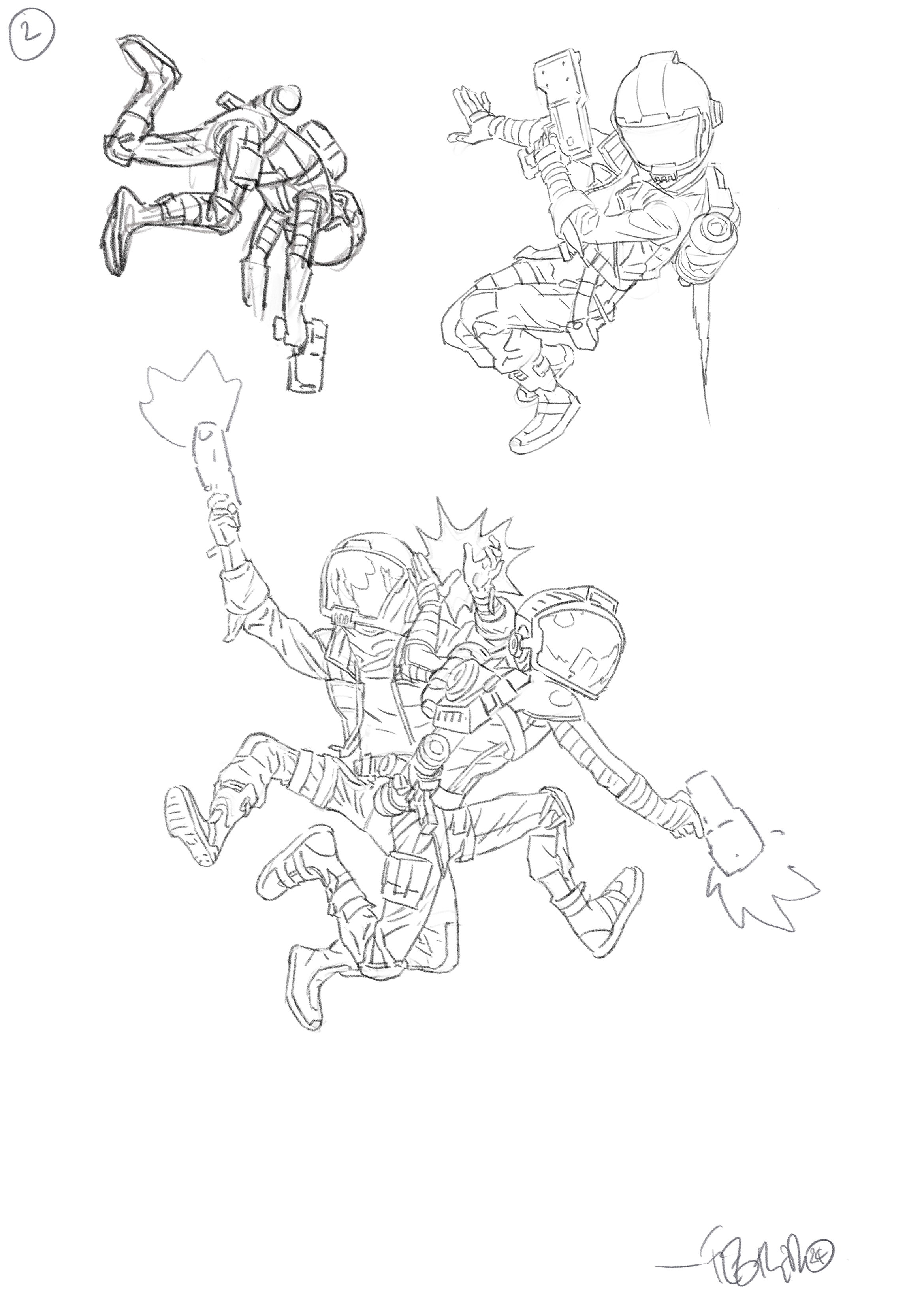
The rest of the sketches are about getting used to drawing the costume details and exploring possible poses I might want to use. I’m looking for something kinetic, anything that can pull the viewer into the action. Another early sketch features our friend the puffer bird from the original game, on the receiving end of a well aimed kick.
3. Setting the composition
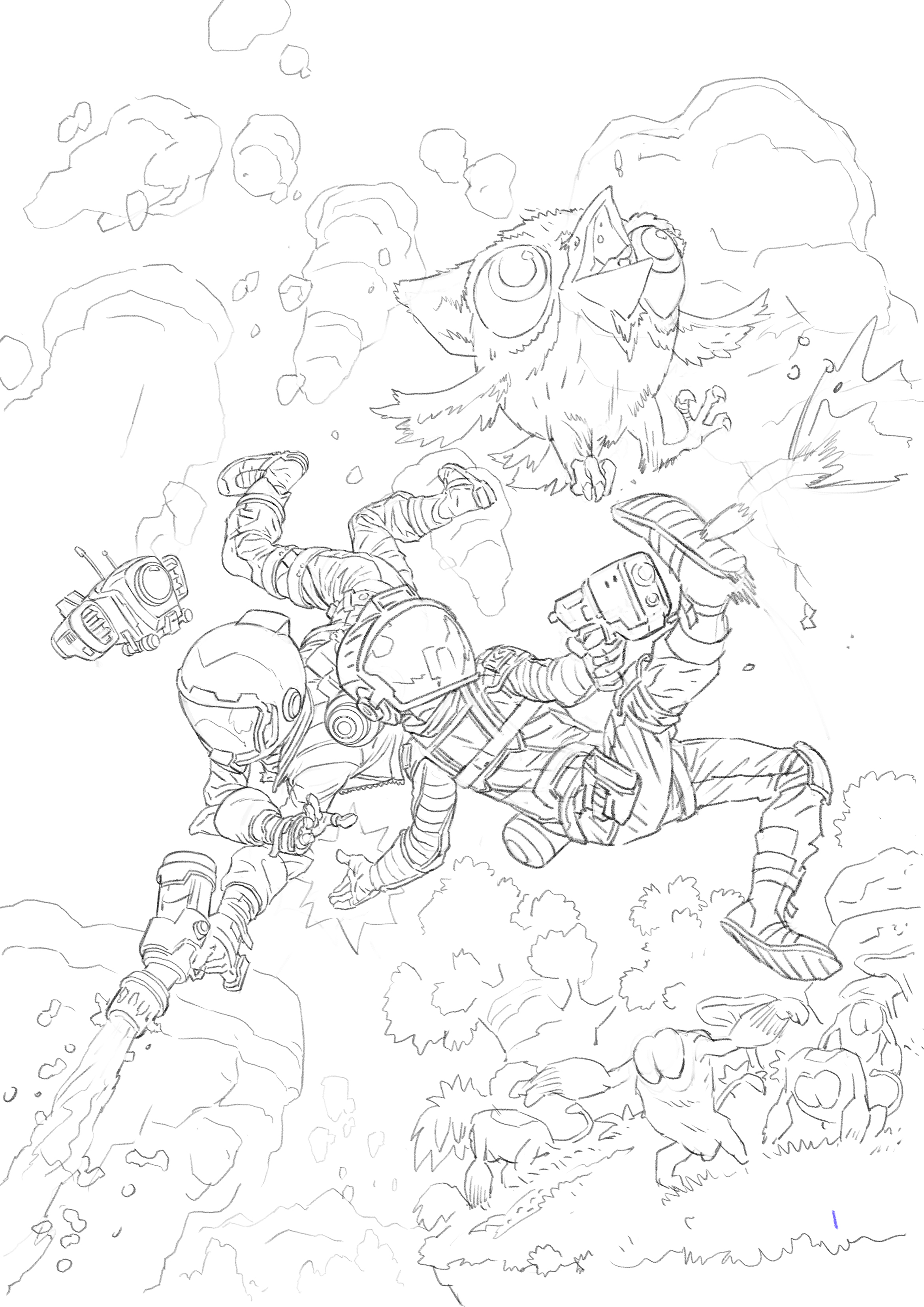
The sketches have gone down well so I combine these elements into a possible composition. The game features multiple costume possibilities so that too is incorporated. The cures are set against floating rock formations and I start to suggest possible foliage and creatures, all gleaned from the videos.
4. Painting digitally
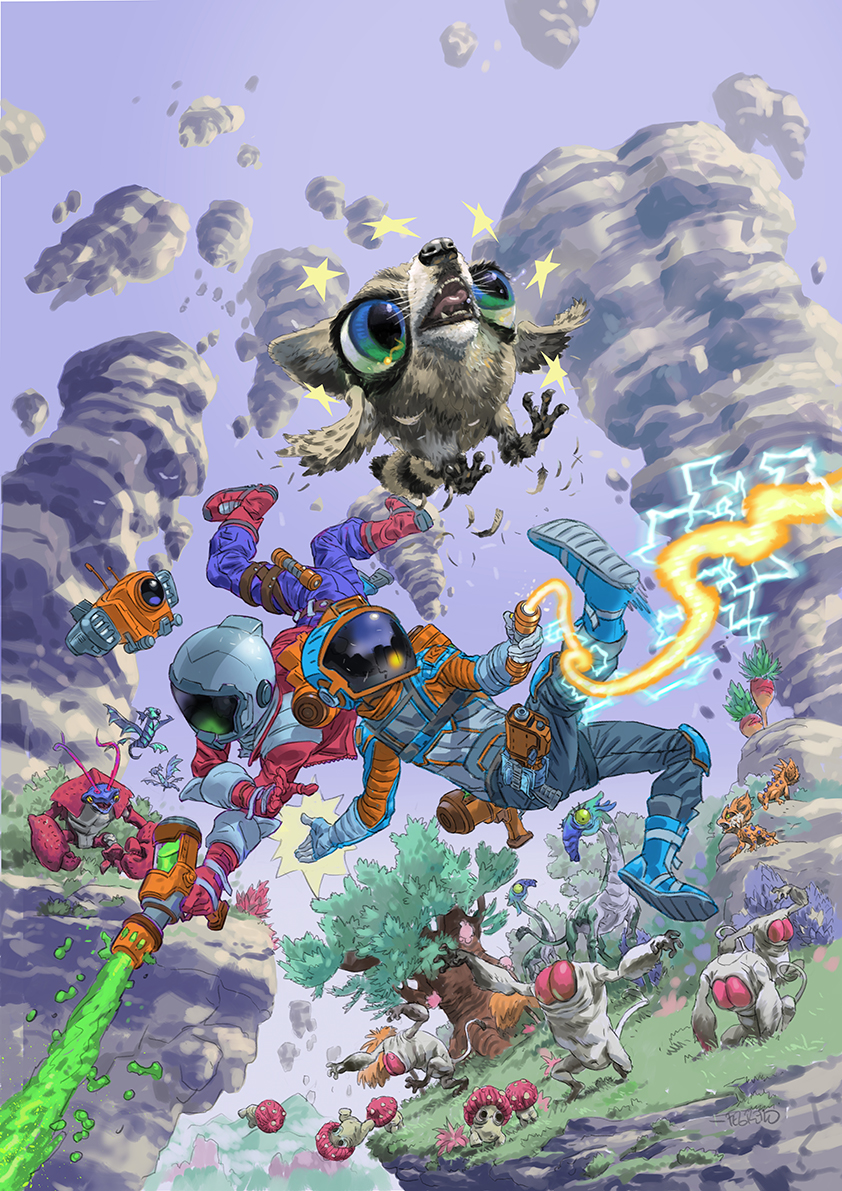
A couple of changes are suggested. Out goes the original puffer bird in favour of Raccoon Logic’s unofficial mascot, the raccoon puffer. He’ll undergo a good few changes along the way. Also, let's downplay the weaponry in favour of the proton whip.
Changes made, more creatures added along with colour. Everything is drawn and coloured digitally up until this point, much more flexible, better to nail details down at this stage before I commit to real paint.
Also of note, I made a feature of that hand slap in colour, it’s a graphic feature that you use in comics to indicate impact or sound. Then it occurs to me to surround the raccoon with stars to indicate dazed and confused. I figured it reflected the humour of the game.
5. Going traditional
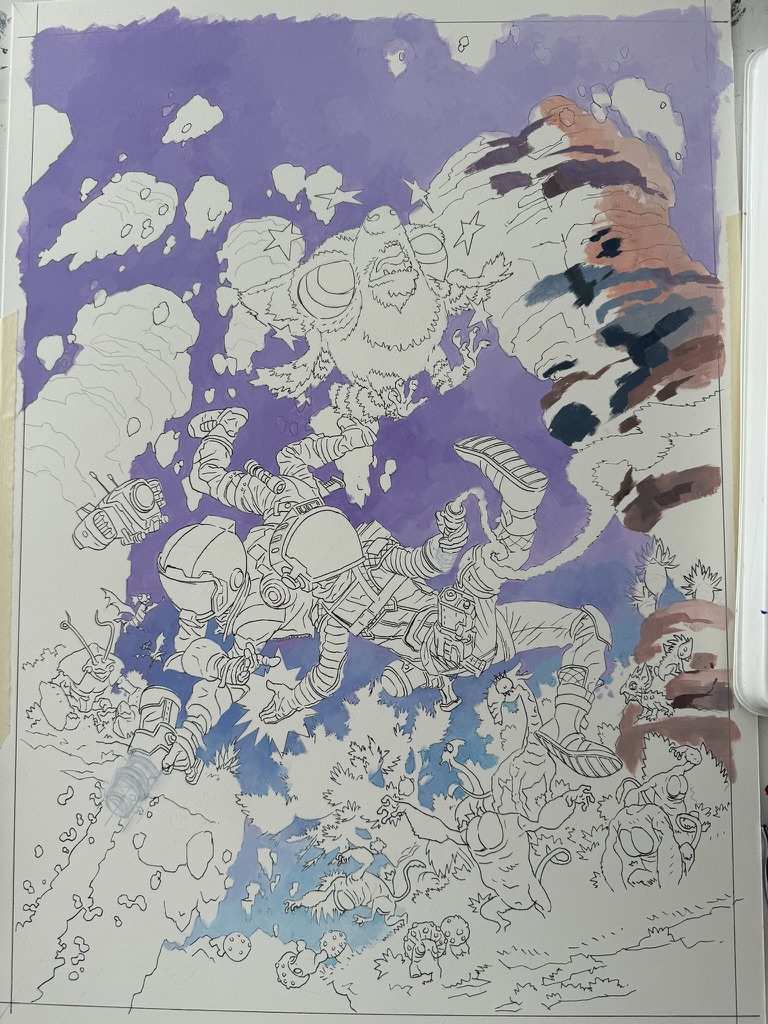
Time to start the real thing. Theres a lot of tiny details so I’m working a little larger than I normally would. I projected the final sketch on to a piece of illustration board and traced it down with a fine marker pen.
Then I start painting with acrylic gouache. I start with the sky as it is the single largest element, it links everything together. Next, the floating rocks, it starts crude and always looks horrible for way too long as you try to balance all the elements.
Note the gun on the left, I’d drawn it badly so it had to be painted out to be redrawn. Much messier in real paint than the very forgiving digital part of the process.
6. Painting and refining
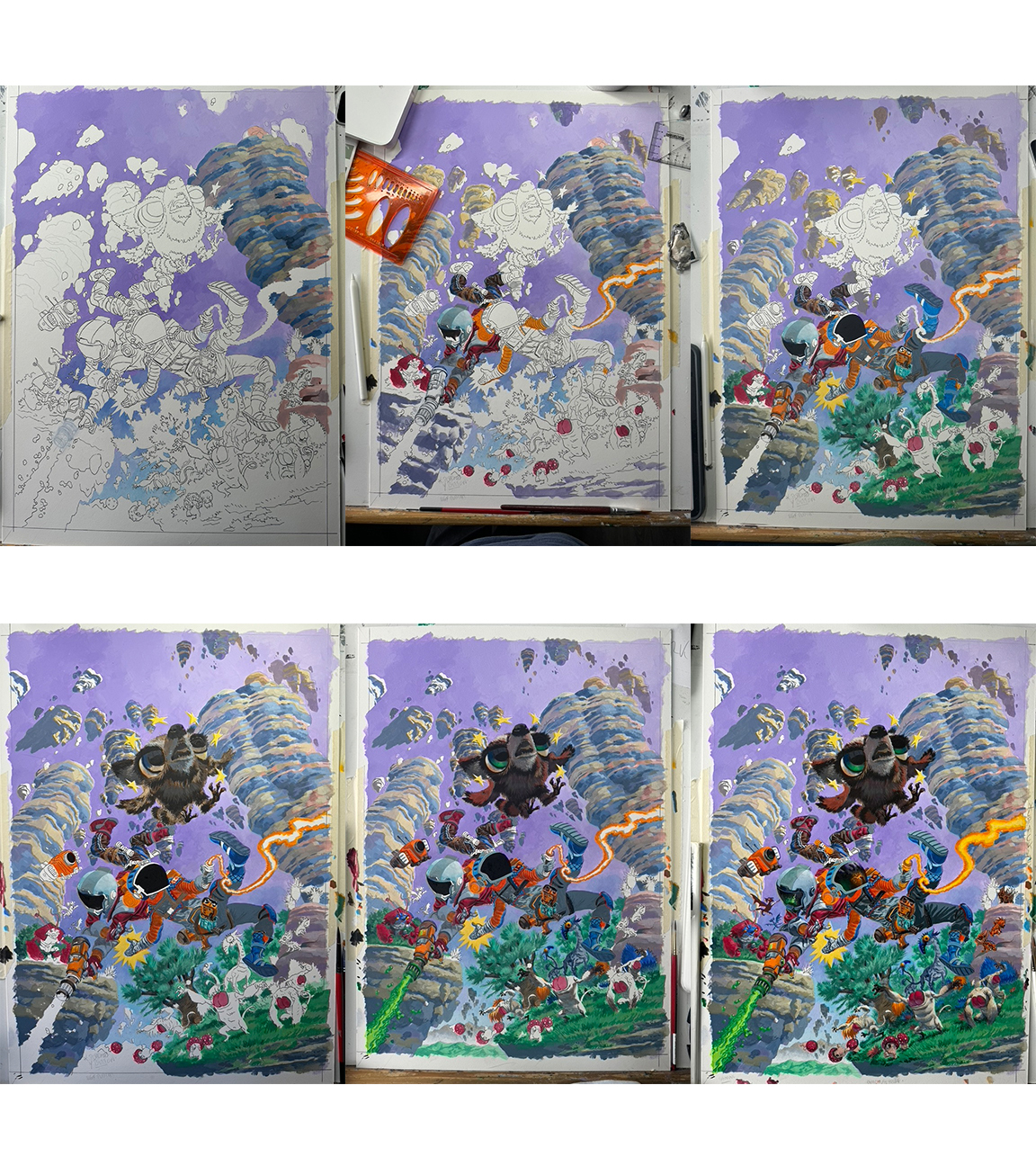
Painting continues in earnest, mistakes are rectified. That describes the whole process really, rectify until done. Details are adjusted all the way through. I’m constantly referring back to the digital colour sketch and the videos.
I’m not trying to reproduce the game in paint but to capture its essence, and still retain my own identity in the work. It is about this stage where it is deemed the raccoon puffer is a bit off model and frankly terrifying! Here is the same stage as before but with a digitally painted replacement raccoon, much cuddlier.
7. Turning to the airbrush
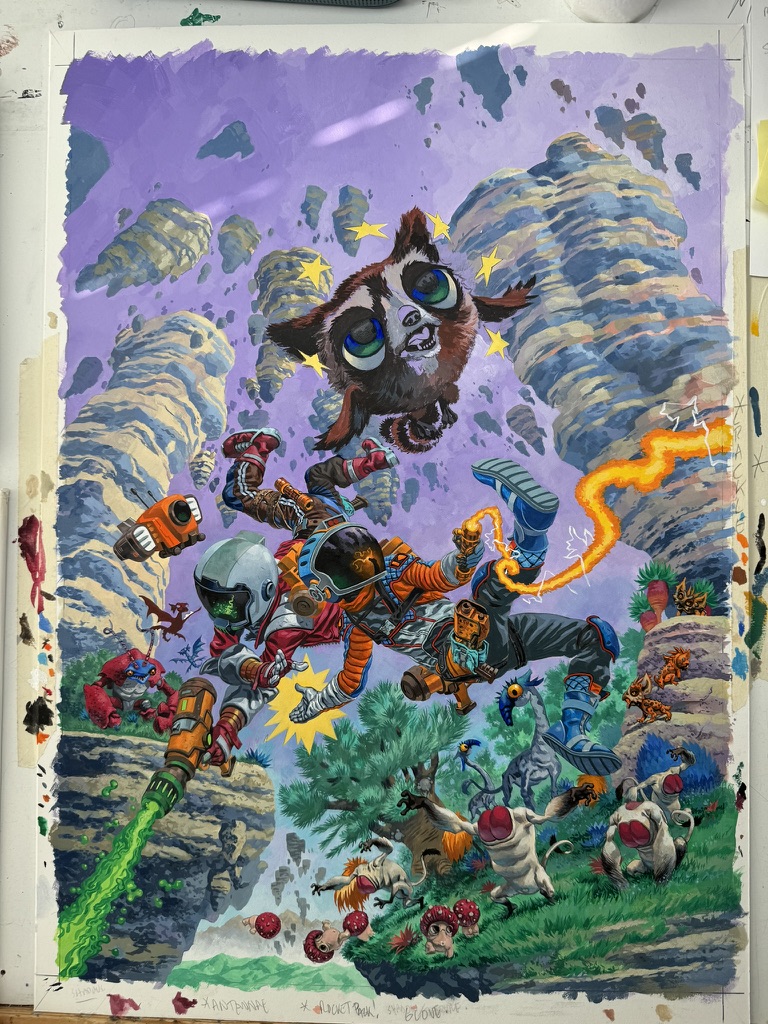
Raccoon repairs underway along with remaining details. As I painted in the electric arcing around the proton whip I realise I’m going to have to see if I can revive my airbrush… it hadn’t been used in over 20 years, would it still work?
8. Finessing the atmosphere
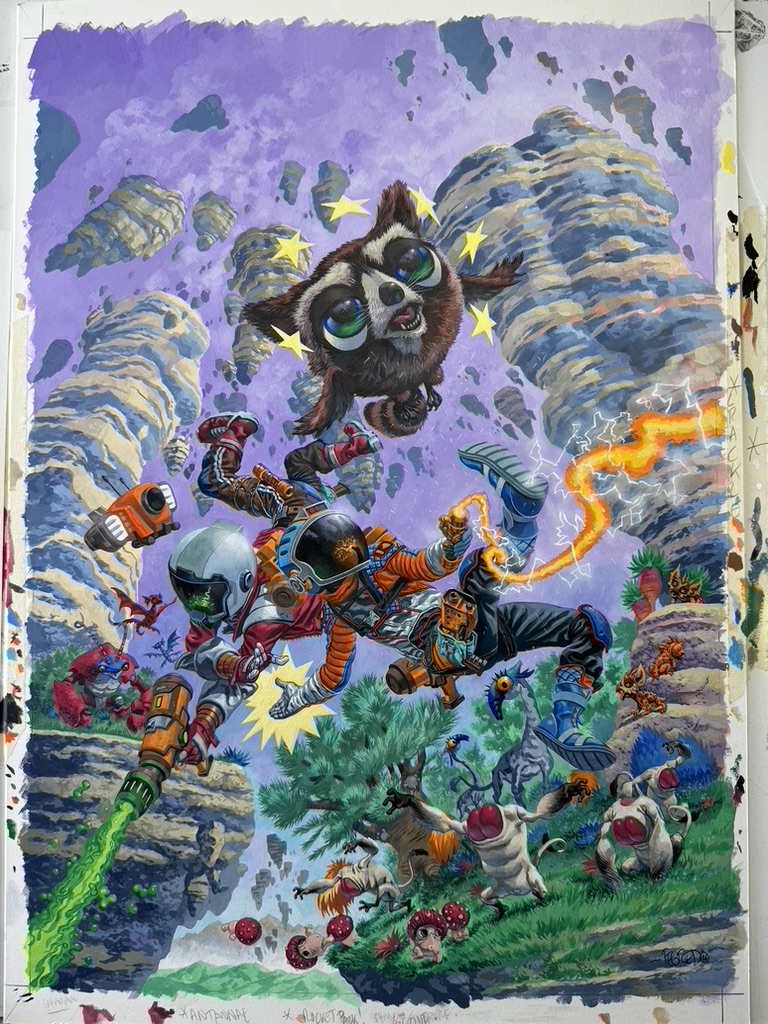
The raccoon is finished, clouds now give atmosphere and volume to the sky and yes, after much cleansing and even more swearing my airbrush sputters into life long enough to add a little glow to the proton whip, hurrah!
9. The final art
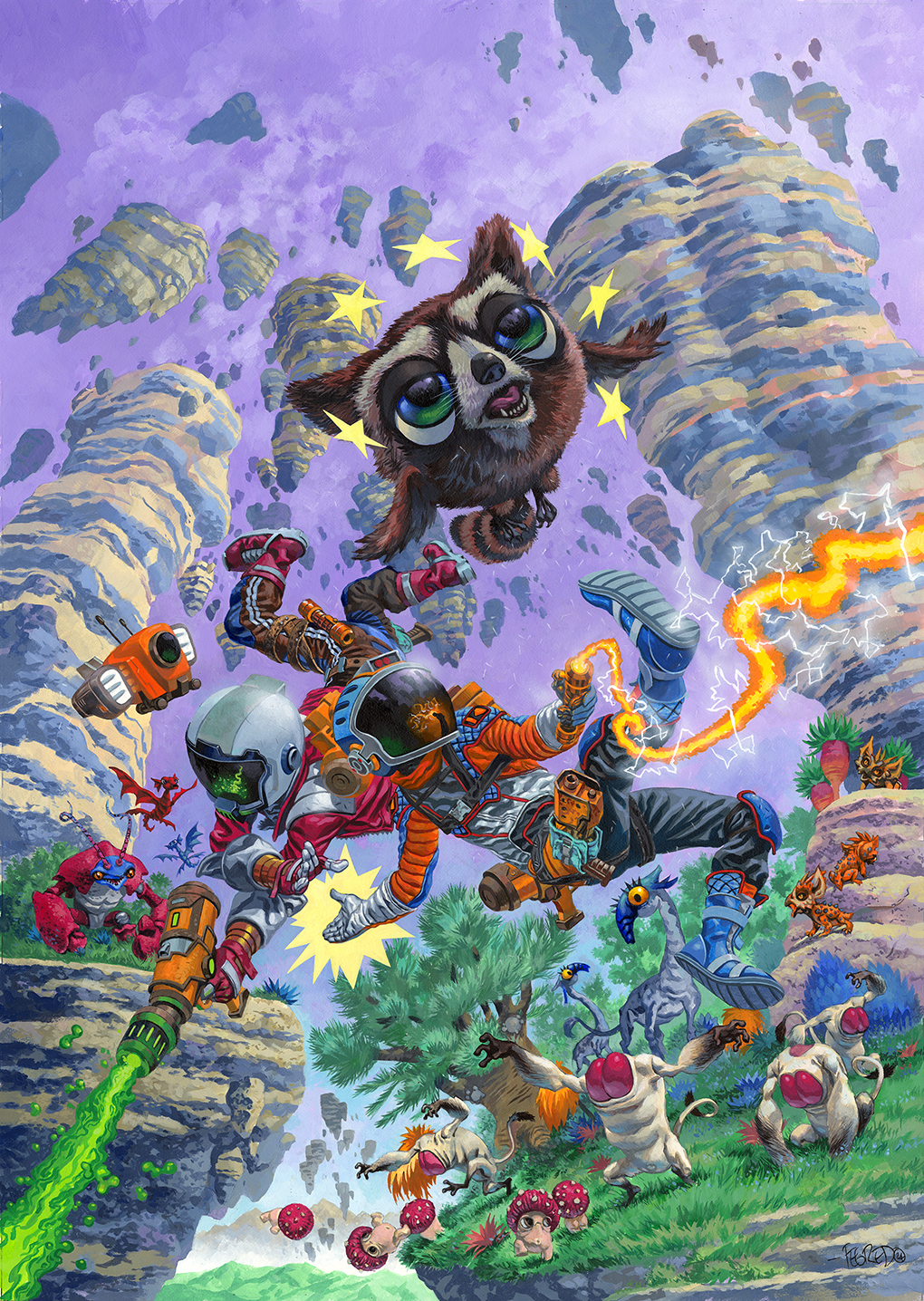
The final artwork is scanned. The scan is cropped, a little work is done to sharpen up the stars and high five graphic, and it’s finished. A cover fit for Edge, I hope! [It did, Duncan's art appeared on the cover of Edge Magazine, issue 403.]
Revenge of the Savage Planet is due for release in 2025, but it can be pre-ordered now at Amazon.







